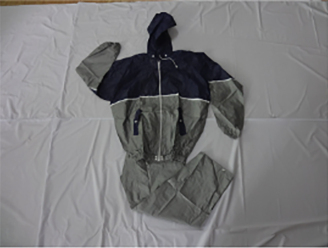Nov . 07, 2024 10:46 Back to list
PVC Rainsuit Manufacturers and Suppliers for Quality Outdoor Protection
Exploring PVC Rainsuit Factories A Comprehensive Overview
In a world increasingly affected by climate change, extreme weather patterns have become more common, prompting a growing demand for protective clothing, such as rainsuits. Among various materials used for this purpose, PVC (Polyvinyl Chloride) stands out due to its effectiveness, durability, and affordability. PVC rainsuit factories have emerged as vital players in meeting this demand, producing high-quality garments that ensure protection from the elements.
The Significance of PVC in Rainsuit Production
PVC is a synthetic plastic polymer that has gained prominence in manufacturing various products, including clothing. Its waterproof properties make it an ideal choice for rainsuits. Unlike other materials that may absorb water, PVC repels moisture, keeping the wearer dry and comfortable. Moreover, PVC is resistant to mildew, ensuring that the rainsuits remain hygienic even after prolonged use.
Understanding PVC Rainsuit Manufacturing
The process of manufacturing PVC rainsuits involves several stages, which can vary between different factories depending on their technology and design capabilities. Typically, it begins with the sourcing of high-quality PVC materials, which are then processed into sheets or films. These sheets are cut into patterns that fit a variety of sizes and styles, ranging from lightweight ponchos to more robust, multi-layered suits suitable for severe weather conditions.
Once the pieces are cut, they undergo a bonding process, where the panels are fused together using heat or adhesives to ensure watertight seams. This step is crucial for the overall performance of the rainsuit. Some high-tech factories may employ ultrasonic welding, which utilizes high-frequency sound waves to bond the materials without the need for additional adhesives.
Design and Development
pvc rainsuit factories

Innovation is at the heart of PVC rainsuit production. Many manufacturers invest in research and development to create new designs that enhance functionality and comfort. Modern rainsuits often incorporate features such as adjustable hoods, ventilation openings, reflective strips for visibility, and pockets for convenience. The design phase also considers aesthetics, offering a range of colors and patterns to appeal to different consumer preferences.
Sustainability has also begun to play a role in the design process. As awareness of environmental issues increases, some PVC factories are exploring eco-friendly alternatives and recycling methods to reduce waste. By utilizing recycled PVC or focusing on biodegradable materials, manufacturers can align their products with the growing market for sustainable apparel.
Challenges Faced by PVC Rainsuit Factories
Despite their critical role, PVC rainsuit factories face several challenges. One of the main concerns is the environmental impact of PVC production itself. The process emits toxic substances, and the disposal of PVC products can lead to long-term pollution. Factories are, therefore, under pressure to adopt better practices and reduce their carbon footprint.
Furthermore, competition is fierce within the garment industry. Many manufacturers are trying to capitalize on the rising demand for waterproof clothing, which results in price wars and the need for factories to continuously innovate in order to differentiate their products. Companies that can’t keep up with emerging trends or consumer demands risk losing their market share.
The Future of PVC Rainsuit Factories
Looking ahead, the future of PVC rainsuit factories appears promising, particularly as more regions experience unpredictable weather patterns. The ongoing development of new materials and manufacturing techniques will likely enhance the functionality and appeal of PVC rainsuits. Furthermore, a growing trend towards eco-consciousness may lead to factories adopting greener practices, thus addressing some of the environmental concerns associated with PVC.
In conclusion, PVC rainsuit factories play a vital role in providing protection against the elements, catering to a market that is only expected to grow. By continually innovating and adapting to changing consumer preferences and environmental challenges, these factories not only contribute to safer outdoor experiences but also to a more sustainable future in the clothing industry. As we embrace the challenges posed by climate change, investing in high-quality, durable, and responsible rainwear becomes increasingly essential.
-
High-Quality Body Storage Bags – Reliable Manufacturer, Factory & Exporter
NewsJul.08,2025
-
High-Quality PE Cadaver Bag for Pets Reliable Manufacturer & Supplier
NewsJul.08,2025
-
Medical Depot - Leading Medical Depot Factory, Manufacturer & Exporter
NewsJul.08,2025
-
High-Quality Work Raincoat – Reliable Manufacturer & Exporter Direct from Factory
NewsJul.07,2025
-
High-Quality Pet Dead Body Bag - Reliable Manufacturer, Factory & Exporter
NewsJul.07,2025
-
High-Quality Vinly Vest Manufacturer & Exporter Custom Vinly Vest Factory
NewsJul.06,2025





